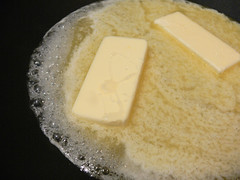| 7774165764 | Functions of carbohydrates | main source of energy, structural support in animals and plants | | 0 |
| 7774165765 | Composition of carbohydrates | C, H, O atoms (1:2:1) | | 1 |
| 7774165766 | Simple sugars | monosaccharide; monomers
glucose, fructose, galactose |  | 2 |
| 7774165767 | Double sugars | disaccharide
sucrose, lactose, maltose |  | 3 |
| 7774165768 | Complex sugars | polysaccharide
starch, glucogen, cellulose |  | 4 |
| 7774165769 | Formula of carbohydrates | C6H12O6 | | 5 |
| 7774165770 | Simplest carbohydrate | sugars | | 6 |
| 7774165771 | Similarity between sugars | formula | | 7 |
| 7774165772 | Difference between sugars | structure | | 8 |
| 7774165773 | Functions for lipids | energy storage, waterproofing, structure, hormones, make up membranes | | 9 |
| 7774165774 | Composition for lipids | C, H, and some O atoms
glycerol and fatty acids |  | 10 |
| 7774165775 | Phospholipid | building blocks of a cellular membrane
consist of:
polar head that is hydrophilic (water loving)
non-polar tails that are hydrophobic (water fearing) | | 11 |
| 7774165776 | Steroids | skeleton has 4 interconnected rings + different functional groups | | 12 |
| 7774165777 | Triglyceride | body fat functions:
cushion organs, insulation, long-term energy storage
composed of:
glycerol + 3 fatty acids | | 13 |
| 7774165778 | Saturated fats | fatty acids with only single covalent bonds between carbon atoms (NO DOUBLE BOND) | | 14 |
| 7774165779 | Unsaturated fats | contains one or more double bonds between two carbon atoms | | 15 |
| 7774165780 | Mononsaturated fat | contains one double bond | | 16 |
| 7774165781 | Polyunsaturated fat | contains more than one double bond | | 17 |
| 7774165782 | Functions of nucleic acids | store and transmit genetic material | | 18 |
| 7774165783 | Composition of nucleic acids | C, H, O, N, P atoms
nitrogenous base, 5 carbon sugar, phosphate group |  | 19 |
| 7774165784 | Two types of polymers of nucleic acids | DNA and RNA | | 20 |
| 7774165785 | Monomer for nucleic acid | nucleotide:
nitrogenous base
5-carbon sugar
phosphate group | | 21 |
| 7774165786 | RNA | translates info into proteins | | 22 |
| 7774165787 | DNA | stores all information that a living organism requires to carry out the processes of life | | 23 |
| 7774165788 | Adhesion | attraction between unlike molecules | | 24 |
| 7774165789 | Amino acid | primary structure of a protein
made up of amino group (NH2), central atom C, carboxyl group (CO2H), and a side chain |  | 25 |
| 7774165791 | Cohesion | atraction between molecules of the same substance | | 26 |
| 7774165793 | Capillary action | tendency of water to rise in a thin tube | | 27 |
| 7774165801 | Hydrolosis | a water molecule is added to disrupt the bond linking monomers together
1 molecule gains an -OH, the other gains an +H |  | 28 |
| 7774298826 | Polymerization | process of making larger molecules | | 29 |
| 7774301244 | Monomer | single-subunit of a macromolecule | | 30 |
| 7774305550 | Polymer | large molecules from repeating subunits of a smaller molecule | | 31 |
| 7774292380 | Functional groups | groups of atoms that give similar properties onto otherwise dissimilar molecules | | 32 |
| 7774165804 | Macromolecules | large polymers | | 33 |
| 7774165808 | Polar | non-symmetric molecules | | 34 |
| 7774165809 | Non-polar | symmetrical molecules | | 35 |
| 7774165811 | Peptide bond | the way amino acids are held together | | 36 |
| 7774218347 | Dehydration synthesis | two molecules covalently bond by removing an H2O molecule
1 molecule loses an -OH, the other loses an +H |  | 37 |
| 7774229681 | Functions of protein | structural support, storage, transport, defense, signaling, catalyst | | 38 |
| 7774231628 | Composition of protein | C, H, O, N (some S) | | 39 |
| 7774263991 | Covalent bonds | sharing of electrons | | 40 |


















































